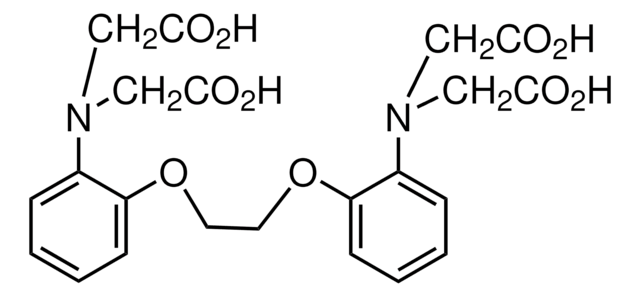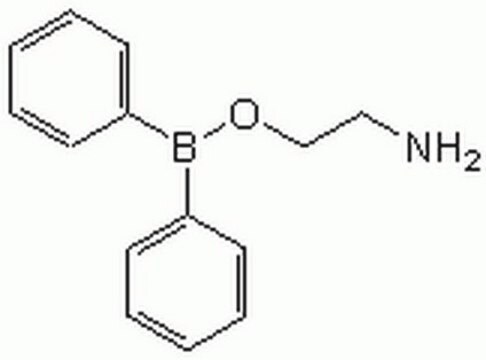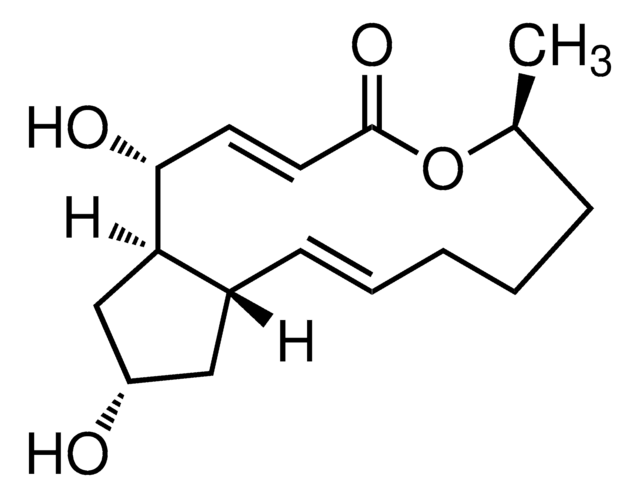SML1845
Thapsigargin Ready Made Solution
≥98% (HPLC), 10 mM in DMSO
Synonym(s):
CHEBI:9516, CHEMBL96926, MFCD00083511, UNII-Z96BQ26RZD, Z96BQ26RZD, [(3S,3aR,4S,6S,6aR,7S,8S,9bS)-6-acetyloxy-4-butanoyloxy-3,3a-dihydroxy-3,6,9-trimethyl-8-[(Z)-2-methylbut-2-enoyl]oxy-2-oxo-4,5,6a,7,8,9b-hexahydroazuleno[4,5-b]furan-7-yl] octanoate
About This Item
Recommended Products
biological source
(Thapsia garganica L seeds)
Quality Level
Assay
≥98% (HPLC)
form
DMSO solution
concentration
10 mM in DMSO
shipped in
dry ice
storage temp.
−20°C
SMILES string
O1[C@@H]2[C@]([C@H](C[C@@]([C@H]3[C@@H]([C@H](C(=C32)C)OC(=O)\C(=C/C)\C)OC(=O)CCCCCCC)(OC(=O)C)C)OC(=O)CCC)([C@@](C1=O)(O)C)O
InChI
1S/C34H50O12/c1-9-12-13-14-15-17-24(37)43-28-26-25(20(5)27(28)44-30(38)19(4)11-3)29-34(41,33(8,40)31(39)45-29)22(42-23(36)16-10-2)18-32(26,7)46-21(6)35/h11,22,26-29,40-41H,9-10,12-18H2,1-8H3/b19-11-/t22-,26+,27-,28-,29-,32-,33+,34+/m0/s1
InChI key
IXFPJGBNCFXKPI-FSIHEZPISA-N
Application
Biochem/physiol Actions
Other Notes
Storage Class Code
10 - Combustible liquids
WGK
WGK 2
Flash Point(F)
188.6 °F - closed cup
Flash Point(C)
87 °C - closed cup
Choose from one of the most recent versions:
Already Own This Product?
Find documentation for the products that you have recently purchased in the Document Library.
Customers Also Viewed
Our team of scientists has experience in all areas of research including Life Science, Material Science, Chemical Synthesis, Chromatography, Analytical and many others.
Contact Technical Service






